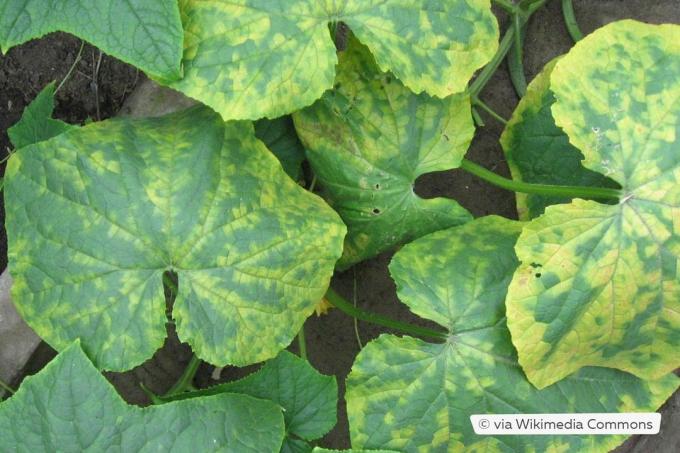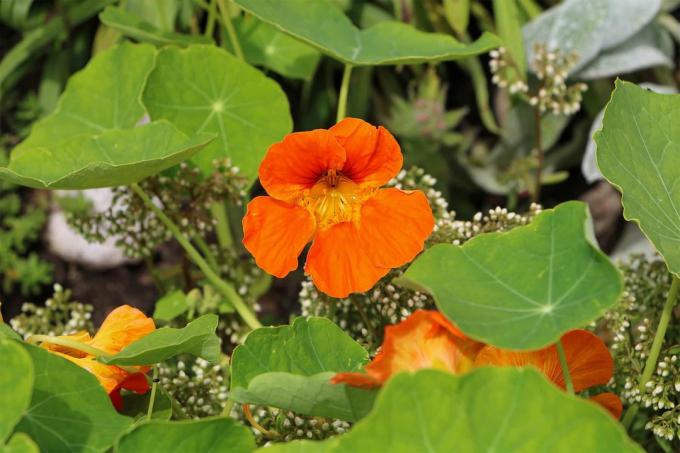
Zucchini and cucumbers are the perfect self-sufficient vegetables. They grow quickly and produce numerous fruits in good conditions. Both varieties are similar. So can you just plant them together?
In a nutshell
- Cucumbers and courgettes belong to the Cucurbitaceae family
- comparable location requirements
- similar exposure to pests and diseases
- too much in common for a bed partnership
- Mixed culture not recommended
Table of contents
- mixed cultures
- relationship
- nutritional needs
- growth characteristics
- root
- planting and harvesting time
- Recommendation
- Mixed culture partner for cucumber & zucchini
- frequently asked Questions
mixed cultures
Mixed cultures have many advantages. Good combinations of plants on a bed can increase crop yields and keep diseases and pests at bay. In order to find suitable bed partners, various aspects must be examined.

relationship
If you want to be sure that a mixed culture will succeed, do not choose closely related plants.
The reason is that plants from a plant family attract pests and diseases. Plants that are not related to each other can even protect the bed partner from diseases and pests if the combination is right.
Cucumber (Cucumis sativus) and zucchini (Cucurbita pepo) belong to the Cucurbitaceae family and should therefore not be planted together.
Both often suffer from:
- mildew
- gray mold
- cucumber mosaic virus
- Bacterial soft rot
- focal spot disease

Both types of plants are often attacked by:
- aphids
- spider mites
- wireworms
- thrips
- snails
nutritional needs
The second aspect to consider when creating a mixed culture is the water and nutrient needs of the bed partners. The differences must not be too great for plants to thrive side by side.
Cucumbers and zucchini need a lot of moisture to thrive. Both have a high nutrient requirement, they are heavy consumers. This aspect would be well fulfilled with the two types of vegetables.
growth characteristics
The growth forms are decisive for the success of a bed partnership. Zucchini plants are spreading profusely. They grow extremely fast and form strong shoots.

Gherkins and gherkins grow creeping on the ground. Their stems and the fruits are very sensitive. In a mixed culture with zucchini, the plants would get caught in each other. The cucumber plants would be damaged and die. Cucumbers are cultivated on a trellis. There is also a risk that the zucchini plants will claim this space for themselves.
root
shallow roots and deep rooter can be combined well on a bed. Cucumbers and zucchini, however, belong to the flat-rooted species. They need a lot of space above and below ground. Therefore, this is also a reason that speaks against planting cucumbers and zucchini together.
planting and harvesting time
Similar planting and harvest times have a favorable effect on mixed cultures. cucumbers and Zucchini are usually preferred and after the ice saints ins planted outdoors. The fruits can be harvested from July to September. New fruits keep coming.
Recommendation
Cucumbers and zucchini should not be planted together in one bed, as there is a risk of attracting diseases and pests. Both plants need a lot of space, so competition quickly arises. The sensitive cucumber plants could be damaged in a mixed culture with zucchini.
Mixed culture partner for cucumber & zucchini
Numerous plants go perfectly with the two pumpkin plants.
- Onions (Allium cepa)
- Lettuce (Lactuca sativa)
- French beans (Phaseolus vulgaris var. nope)
- Endive (Cichorium endivia)
- chard (Beta vulgaris)
- Parsley (Petroselinum crispum)
- Spice marigolds (Tagetes tenuifolia)
- Nasturtium (Tropaeolum hybrids)
- Marigold (Calendula officinalis)

Tip: The yield of zucchini and cucumber plants depends on the number of fertilized flowers. Bees are the most important helpers. Those who plant marigolds, cress and marigolds attract valuable insects and do not have to worry about pollination.
frequently asked Questions
Both types of vegetables prefer sunny, warm locations with deep, well-drained, nutrient-rich soil. They can also develop well in partially shaded places.
Both cucumbers and zucchini should not be grown on a patch where cucurbits were grown the previous year. They must not follow zucchini, cucumber, squash and melon.
are unfavourable Mixed crops with tomatoes and potatoes.

